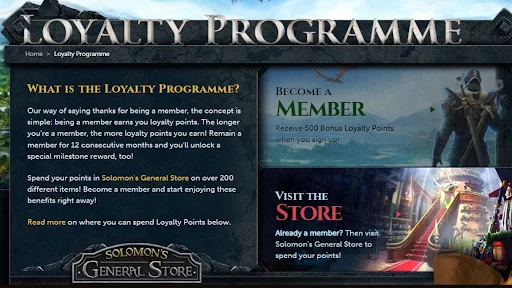Video games are more than just a regular entertainment activity. From gentle games like Candy Crush, dramatic as The Last of Us to intense intellectual competitions like Wordle, all show the attraction of this billion-dollar industry.
The Indian gaming market is currently at a level 2.6 billion USD and is expected to achieve 8.6 billion USD by 2027. In particular, the Electronic Sports (Esports) segment is demonstrating strong growth potential. Despite being a relatively new industry, Esports has established its appeal, reach, and earning potential. The gaming industry has reached new heights – this is driven by the tech-savvy and digital-first generation Millennials and GenZ.
A recent study has shown that the average gamer spends less than 1.2$ and spends less than 1 hour a day gaming. Although this may make people think that this is not a big number, from a business perspective, this is actually a strongly untapped opportunity. Increasing interaction with players is an important key to unlocking success in this industry. Loyalty programs and referral marketing have proven to be effective ways to increase player engagement in the gaming industry.
In this article, we'll explore the elements of a successful loyalty program and referral marketing campaign in the gaming industry, and learn the best ways to implement them. declare them.
The power of Loyalty programs and Referral Marketing in games
A loyalty program is a system designed to reward players for their participation and long-term commitment to the game. By capitalizing on players' inherent desire for high achievement and recognition, while fostering a sense of inclusion and belonging in the gaming community, these programs create dual benefits for both players and game publisher.
For example, RuneScape's Loyalty Program for members is made possible by awarding points to players who participate regularly. These points can be used to exchange for exciting items, including exclusive outfits, emotes, and other in-game content. The longer a player sticks with the game, the more accumulated points will increase. This will create incentives for players to maintain their level of engagement and stick around longer.

RuneScape Member Program
One of the key activities in retaining players is building a Program for Members. This helps reduce churn rates and creates an attractive element for players to come back often. In addition, membership programs also increase opportunities for game publishers to boost revenue, because active players often spend a lot of money to own in-game items.
A less talked about but extremely important benefit of a membership program is the ability to collect data on player behavior, preferences and engagement levels. Game publishers can use this data to improve the gaming experience.
Most importantly, the membership program encourages players to actively engage in referral/word-of-mouth marketing. It fosters team spirit among players, motivating them to interact and cooperate within the game's ecosystem. An example of this is League of Legends' Honor System. This is not a membership program in the traditional sense, instead it rewards players who have a positive impact on their teammates' gaming experience. Players receive rewards such as Honor Awards or player titles for regularly demonstrating the spirit of practice and teamwork. This encourages an active community and can lead to long-term player retention.
Honor system in League of Legends (League of Legends)
Besides building the in-game community, the Honor System also indirectly promotes sustainable development for the game. Like respecting teammates in a game, positive experiences are often shared with friends, relatives, and the online community. This creates a viral effect, attracting more new players to participate.
A great example of the power of referral marketing is Wordle – a simple word game created by a man to entertain his girlfriend. Starting with just 90 players, Wordle quickly attracted millions of players and was eventually acquired by the New York Times. This growth is a completely natural result by encouraging players to share daily results on social networks. This created strong curiosity and competition, making Wordle a hugely successful game.
Similarly, Fortnite's "Refer a Friend" program is also an interesting example. Players can send invitations to friends and both the referrer and the referred person receive in-game rewards. This event helps retain current players and attract new players, contributing to Fortnite's huge success.
Building an effective player retention and referral program in the Game industry
So, implementing a loyalty program can be a great way to engage and retain players, while also attracting new players. Referral marketing will achieve unimaginable results if game publishing companies do it properly.
Here's a detailed step-by-step guide on how to set up and manage a loyalty program and referral marketing in the Gaming industry:
Step 1: Research and Plan
Research and planning are the first steps to building an effective loyalty program. Start by looking at successful programs in the gaming industry and the reasons behind their success.
The most important thing is to clearly understand the target audience and their motivations. This research identifies the right program for your playing style and gaming community.
Step 2: Determine goals
The next step is to clearly define the goals for your loyalty program and referral marketing. Is your goal to increase player retention, drive monetization, build community, attract new players, or all of the above? The type of program you implement will depend on these goals. Clearly defining goals helps you design appropriate programs and track program effectiveness more easily.
Step 3: Design a customer loyalty program
To be successful, a loyalty program needs to be built to provide rewards and incentives to players based on their engagement and spending. Some elements of a loyalty program that should be kept in mind include:
- Accumulated point system: Gives players points for in-game purchases, achievements, play time, and other activities.
- Reward system by level: (e.g. bronze, silver, gold) allow players to unlock increasingly valuable, exciting, and exclusive rewards the longer they play. Rewards can be in-game items, exclusive content, discounts, early access, or real-world items.
- Virtual currency system: Players can earn and use in the loyalty program.
- Attractive and diverse challenges: Made weekly or monthly, cater to players' different interests and encourage them to complete specific tasks to receive rewards.
- Limited time offers and exclusive rewards: Create a sense of urgency and excitement for players.
- Personalized rewards: Based on the player's preferences and playing style.
- In-game announcements: Through in-game notifications, social media posts, emails, and community forums.
- Track progress: Notifications of progress, levels or milestones help players easily understand their progress in the program.
- Feedback collection system: Encourage players to provide ideas to improve the program.
- Social network integration: Allows players to share their achievements on social media platforms.
Examples: Fortnite Battle Pass is a typical successful loyalty program in the gaming industry. This leveling system uses exclusive in-game items and virtual currency to encourage players to participate as they complete challenges and level up. In addition, the Battle Pass is regularly updated with new content, guaranteed to attract players. So, Fortnite's loyalty program has boosted revenue and increased the influence of the gaming community, and encouraged players to proactively introduce themselves to many people around them.
Step 4: Implement Referral Marketing
Referral marketing, also known as viral marketing, is a strategy that leverages the power of existing players to attract new players. This strategy is based on the trust of the existing player community and the ability to proactively share with friends. So, it becomes a cost-effective strategy to attract new players. Additionally, referral marketing allows publishing companies to easily reach out to potential players interested and interested in participating.
To set up a successful referral marketing program, you need to pay attention to the following important factors:
- Simple and intuitive onboarding process: Players can easily understand and follow the steps to introduce friends to the game.
- Attractive incentives for both referrers and referred people: This can include in-game bonuses, exclusive items, special character skins, early access to new content, etc. Attractive offers will encourage players to refer friends.
- Separate referral code: Each player has their own referral code, creating a sense of ownership and personalization, making them more excited to share the code with friends.
- Integration with social networks: Allows players to easily share referral codes with friends on social media platforms, increasing reach.
- Limited time offer: Create a sense of urgency and encourage players to quickly refer friends to receive incentives. In addition, organizing community events that encourage players to invite friends to join and giving separate rewards to those who introduce new players will stimulate competition, motivating them to refer more people.
- Gamification: Use game elements like progress bars, milestones, and achievements to engage players, making onboarding more fun.
For example: World of Warcraft's "Recruiting companions" program: Players who refer friends to WoW will receive attractive rewards such as exclusive mounts, pets, and other rewards, including free play codes as soon as their friends start participating. in game. This program not only encourages referrals but also motivates players to team up and play together, enhancing team spirit.
Step 5: Choose technology
Management tools are key to the success of loyalty programs and referral-based marketing. These software or platforms assist you in tracking player activities, managing reward points, automatically distributing rewards, etc.
Successful example: Adda52, India's No. 1 Poker website, has applied WebEngage's customer retention operating system to enhance the online gaming experience for players. WebEngage's Customer Care team worked closely with the teams at Adda52 to understand players' journeys, goals and challenges in detail. The two parties then built a flexible solution to add bonus points to player accounts using the API Call feature on the WebEngage dashboard. After the API Call feature is successful, Adda52 uses multi-channel communication to notify players that reward points have been added to their respective accounts. As a result, more than 15% total players started participating in the games with bonuses.
Step 6: Promote the program
An important step in this process is communicating about the loyalty program and referral program through various communication channels, such as in-game notifications, emails, social networks, etc. Explain clearly Clarifying the benefits and ways for players to participate is key to the success of these programs.
Step 7: Monitor, analyze and optimize
Regularly monitoring the effectiveness of your loyalty program and referral marketing efforts is essential. As mentioned above, loyalty programs allow game publishers to collect a lot of data about player behavior and engagement. Analyzing this data will yield a wealth of useful information, including seeing which rewards and offers players look forward to most, and which channels bring in the most referrals. This information can help improve the gamer experience, plan marketing and build communication strategies. From there, promote conversion and retain players.
For example, Adda52 used RFM analytics on the WebEngage dashboard to identify first-time depositors in the regular cash game segment. They use this analysis result to encourage players to deposit more money through channels and play more deposit games on Adda52's application/website. As a result, 85% players have returned to play the game to deposit money many times.
Step 8: Interact and communicate
Keeping players in regular contact about their progress in the loyalty program and reminding them of the rewards available is a great way to maintain engagement. Engaging players through social media, in-game events, and newsletters to keep them interested and motivated can make a big difference. The more personalized the communication, the more effective it is for players.
For example: ZenGaming leveraged contextual notifications on the website and emails to keep players engaged. With the help of WebEngage's Journey Designer, automated interaction flows are set up to trigger player communication at key moments in the player's journey. As a result, their Day 1 player retention increased from 77.3% to 97.1%.
Step 9: Measure Return on Investment (ROI)
Metrics like player engagement, average spend, referral conversion rate, etc. can be used to calculate the ROI of a loyalty program and Referral marketing. This data can then be analyzed and used to develop strategies to increase the effectiveness of programs or adjust direction if necessary.
Funnel Analysis, especially Bottom of The Funnel (BOF) metrics, is a powerful tool for measuring ROI. By tracking player behavior through each stage of the funnel (e.g. game installation, account registration, deposit), you can determine the effectiveness of your loyalty program and marketing introduced in motivating players to perform the actions they desire.
Step 10: Comply with Regulations
The most important step is to ensure that your loyalty and referral marketing programs comply with applicable regulations, including data privacy and consumer protection laws. This helps to increase the credibility of your programs and build trust with players.
Conclude
With strategic planning, thorough design, and ongoing nurturing, building loyalty programs and referral marketing can benefit players while increasing their longevity. players and your game's success in an increasingly competitive environment.
The effectiveness of your loyalty programs and referral marketing may vary depending on target audience, reward quality, and overall gaming experience. Collecting feedback from players can help you refine these programs and create a competitive advantage.
A technology partner that understands the gaming industry can provide detailed analytics and tools for you to increase player engagement and increase your market share in the gaming sector. WebEngage has a strong track record of providing gaming brands like you with solutions that are effective, sustainable, and easy to deploy. Read our Success Lessons™ and request a demo to understand how we can help you achieve your goals.




